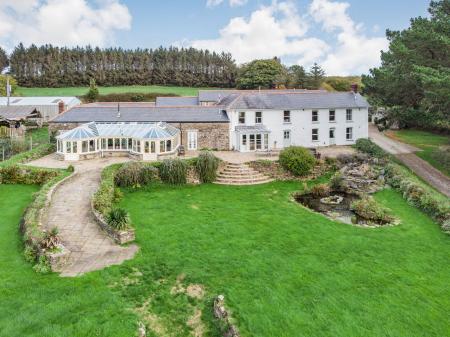Where are the kings and queens of England buried?
This guide looks at where you can find the burial places of the kings and queens of England since the 7th century. In some cases, details of the monarch's burial place are limited or non-existent, and we are left to guess at where they were buried. In most cases - but not all - you can visit the burial place, though in a few cases the burial place no longer exists.
Any list of English monarchs is open to some interpretation; what do we define as 'England'? Most historians would probably suggest that Athelstan was the first king of a reasonably unified English kingdom. But that would mean omitting Alfred the Great from our list! So what follows is not strictly defined by what is now England, and includes some earlier regional monarchs for whom the burial place is known.
By Location
Winchester Cathedral, Hampshire
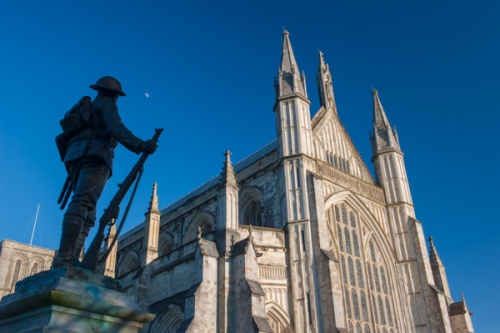
The earliest monarchs in this guide are buried in Winchester Cathedral, Hampshire. That's not surprising when you consider that the cathedral was founded in AD 642. It was not a cathedral at first but was quickly raised to cathedral status and was the most important church in Saxon England.
Today we think of Westminster Abbey as the most important church in the realm but the Abbey was not built until 400 years after the cathedral church at Winchester.
The earliest known king to be buried at Winchester is Cynegils, d.643, but the most famous is William II, the son of William the Conqueror, who died in a hunting 'accident' in the New Forest in 1100 (he was probably murdered).
One of Winchester Cathedral's prize possessions is a group of mortuary chests traditionally said to contain the bones of early kings of Wessex and England, among them Cygnelis, Cenwalh, Egbert of Wessex, Athelwulf, Eadred, Eadwig, Cnut, and Harthacnut. There is no way of determining with absolute certainty if the tradition is correct, but the bones have been carbon-dated to the late Saxon period, which suggests that the tradition might be true.
- Cynegils, d.643
- Cenwalh, d.672
- Egbert of Wessex, d. 839
- Athelwulf, d. 855 (originally buried at St Andrew's Church, Steyning)
- Eadred, d. 955
- Eadwig, d. 959
- Cnut the Great, d. 1035
- Harthacnut, d. 1042
- William II, d. 1100
St Bartholomew's Church / Hyde Abbey, Winchester
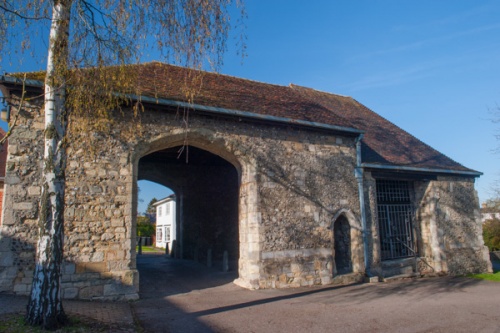
Here we enter the realm of speculation. We do know that Alfred the Great, his wife and children, including his direct heir Edward the Elder, were buried at the Benedictine monastery of Hyde Abbey, immediately outside the Winchester city walls.
Tradition suggests that the royal family were interred at St Bartholomew's Church, which served as a lay people's church for the abbey. The royal graves were discovered in 1788 during the construction of a prison.
After the prison was torn down a local historian unearthed bones which he claimed belonged to King Alfred. The vicar of St Bartholomew's Church believed the story and 'King Alfred' was reinterred in the church. Unfortunately, later investigation proved that the supposed king's bones actually dated to the 13th century.
So, what happened to the remains of Alfred and Edward the Elder?
An archaeological investigation in 1999 uncovered bones on the abbey site. A piece of pelvic bone was dated to the correct time period. Could this be the last remains of Alfred the Great? We simply don't know, though it is a possibility.
- Alfred the Great, d. 899
- Edward the Elder, d. 924
Shaftesbury Abbey, Dorset
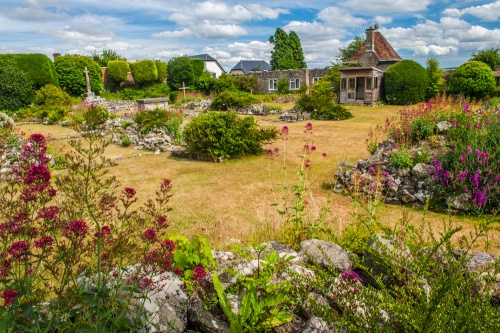
Shaftesbury Abbey was founded by King Alfred around AD 888, possibly in thanks for his victory over the Danes. Alfred had established the fortified burh of Shaftesbury just a few years earlier in AD 880 and selected the new town as the site for his abbey. Alfred's daughter Aethelgiva (or Aethelgifu) served as the first Abbess.
In AD 978 the body of King Edward was brought to Shaftesbury Abbey after his murder at Corfe Castle. The murdered king was canonised as Edward the Martyr and donations from pilgrims coming to pray at the shrine of St Edward made Shaftesbury a rich and powerful abbey.
King Cnut died here in 1035 after coming to pray at St Edward's shrine. Though Cnut's body was interred at Winchester Cathedral, traditions say that his heart was buried at Shaftesbury Abbey. In the early 20th century a small casket was unearthed which was said to contain Cnut's heart. Shaftesbury Abbey was the last English monastery to be suppressed by Henry VIII.
- Edward the Martyr, d. AD 978
- Cnut the Great, d. 1035 (heart only)
Wimborne Minster, Dorset
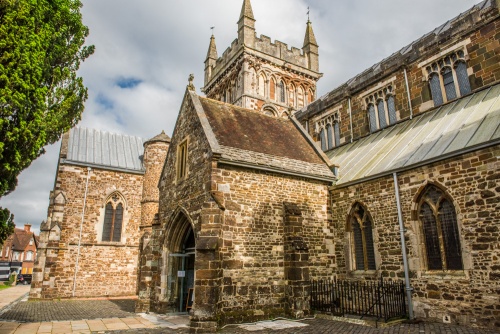
In the early 8th century Cuthberga, the sister of King Ina, established a nunnery at what is now Wimborne Minster. The present minster church stands atop the foundations of Cuthberga's nunnery, which was destroyed by a Danish raid in 1013.
Cuthberga herself was buried here, as was the 10th-century Danish king Sifferth. In AD 871 Alfred the Great's elder brother Ethelred (or Aethelred) was buried at Wimborne Minster. Don't confuse this Aethelred with the (in)famous Aethelred the Unready). The minster's rich heritage was recognised in 1318 when Edward II made it a royal peculiar, that is, it was under the direct control of the monarch, rather than the Church.
- Aethelred I, d. AD 871
Glastonbury Abbey, Somerset
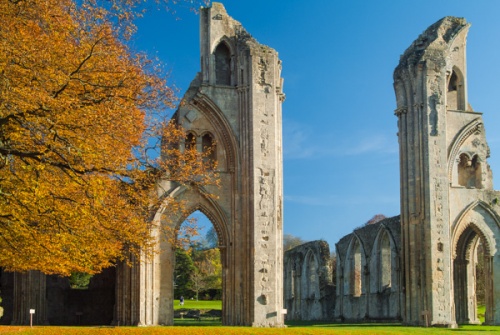
When it comes to Glastonbury Abbey it is difficult to sort legend from fact. The origins of Glastonbury are lost in the mists of time and stories link it to Jesus, Joseph of Arimathea, and tales of King Arthur.
Some stories associate it with the mystical Isle of Avalon, where Arthur was taken for burial. So strong was this tradition that 1191, bones said to be those of King Arthur and Queen Guinevere were unearthed near the south side of the Lady Chapel.
In 1278 these relics were reburied by the high altar in the presence of King Edward I. The traditional site of King Arthur's grave is clearly marked amid the Abbey ruins. It seems likely that the 12th-century monks saw the opportunity to draw more pilgrims to Glastonbury and invented the story, but we are on firmer historical ground with other royal burials.
The Saxon kings Edmund I and Edgar I were buried at Glastonbury as was Edmund Ironside. Edgar I's tomb became a destination for medieval pilgrims and he was reburied in a specially built chapel in the 15th century.
- King Arthur (legend)
- Edmund I, d. AD 946
- Edgar I, d. 975
- Edmund Ironside, d. 1016
Sherborne Abbey, Dorset
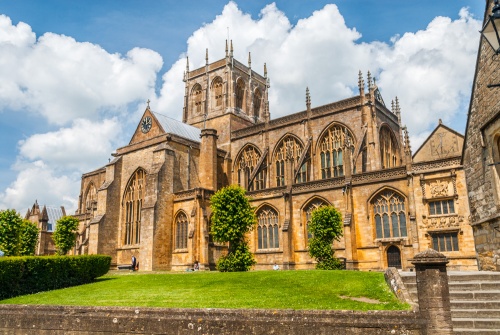
Around AD 705 St Aldhelm founded an abbey at Sherborne, on the site of an existing church. The abbey church served as the cathedral for large areas of Dorset, Wiltshire, Somerset, Devon, and Cornwall until the bishopric was moved to Salisbury in 1075. It was obviously a place of immense spiritual and political influence during the Saxon era so it comes as no surprise that two Saxon kings are buried here.
Alfred the Great attended Sherborne School, and his brothers Aethelbald and Aethelbert were buried in the Abbey church, though their actual grave sites are unknown.
- Aethelbald, d. 860
- Aethelbert, d. 866
Malmesbury Abbey, Wiltshire
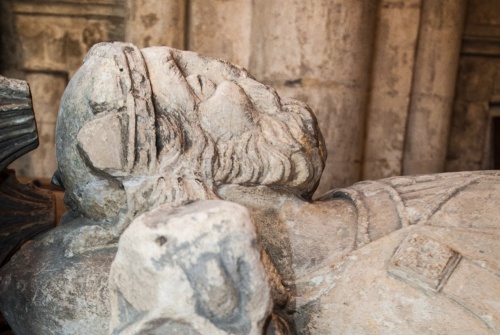
In 642 the Irish monk Maildulph established an abbey and school at Malmesbury. One of the first students of Maildulph's school was Aldhelm, who late served as the first abbot of a new Benedictine monastery founded at Malmesbury around 671.
Some 260 years later King Athelstan, grandson of Alfred the Great, enlarged the abbey church and gave the monks religious relics. These relics helped turn Malmesbury Abbey into a destination for pilgrims and ensured the Abbey's wealth and status. When Athelstan died in 940 he was buried in the Abbey church. His tomb, topped by a worn effigy, still stands in the splendid 12th-century church that replaced the building he helped build.
- Aethelstan, d. 939
Reading Abbey, Berkshire
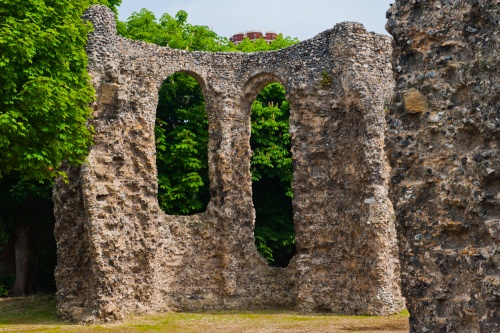
Reading Abbey owes its existence to Henry I, who founded the abbey in 1121 and made one of the most important and wealthiest monasteries in England. Henry's patronage helped made Reading a centre of scholarship and political influence throughout Europe. Henry wanted to be buried in the monk's choir at Reading, but he died on a hunting trip to Normandy.
His entrails, brain, and eyes were buried at the priory of Notre Dame du Pre, near Rouen, while the rest of Henry's body was embalmed. It lay in state at the Abbey of St Stephen in Caen until the weather was calm enough to allow a Channel crossing. Henry's body was carried to Reading Abbey sewn into a bull's hide, and buried before the high altar in the presence of his wife Queen Adeliza of Louvain.
The queen was herself later buried at Reading. The site of Henry's grave is a mystery, as much of the abbey has been lost under nearby housing. In 2016 ground-penetrating radar was used in an attempt to locate the high altar, where Henry is said to have been buried, but so far attempts have proved inconclusive.
- Henry I, d. 1135
Canterbury Cathedral, Kent
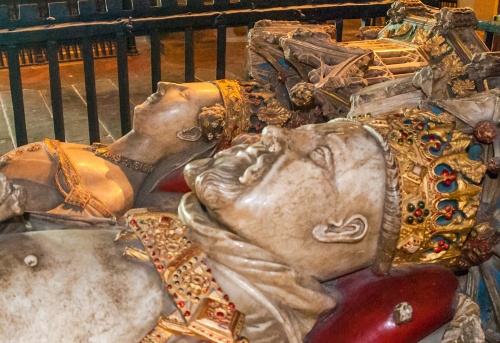
When St Augustine arrived in Kent in AD 597 one of his first acts was to build a cathedral church. Augustine served as the first Archbishop of Canterbury and a religious community grew up around his cathedral.
In the 10th century this community was formalised as a Benedictine monastery. The superb cathedral church we see today dates to 1172 when a fire provided an excuse to rebuild an earlier church and create a fitting shrine for Thomas Becket, who was murdered here in 1170.
A later burial was Henry IV, who died of a disfiguring disease thought now to have been leprosy. His richly carved memorial is on the north side of the Trinity Chapel and shows his effigy beside that of his wife Joan of Navarre.
- Henry IV, d. 1413
Faversham Abbey / St Mary of Charity Church, Faversham, Kent
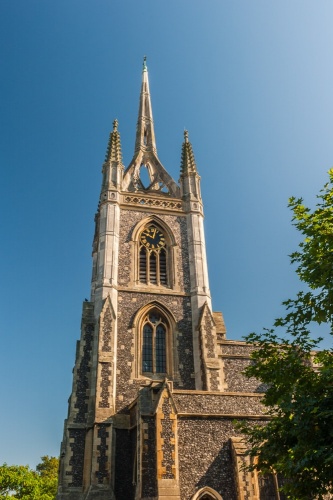
In 1148 King Stephen and Queen Matilda established a Cluniac abbey just outside the town of Faversham, Kent. The king and queen along with their son Eustace of Bolougne were buried at Faversham Abbey.
Unfortunately, the abbey was destroyed at the Reformation and according to tradition the royal bones were thrown into Faversham Creek. The abbey foundations lie under Queen Elizabeth's Grammar School. An investigation in 1964 unearthed the royal tombs but they proved to be empty, perhaps supporting the tradition that the bones were scattered.
Another possibility exists; a local story suggests that the bones were reburied in Faversham Parish Church when the Abbey was suppressed. An uninscribed tomb in the church is said to be King Stephen's, but there is no conclusive proof one way or another.
- Stephen, d. 1154
Waltham Abbey Church, Essex
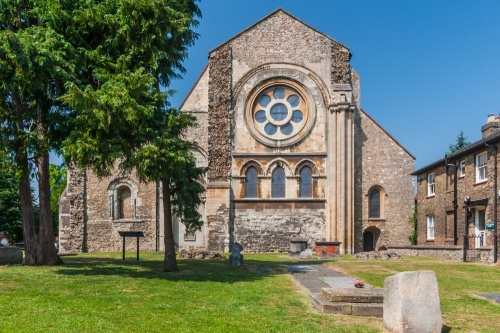
What happened to the remains of King Harold after his death at the Battle of Hastings in 1066? We don't know, but two contradictory traditions exist suggesting that the dead Saxon king was buried at either Waltham Abbey in Essex or at Bosham in West Sussex.
The case in favour of Waltham Abbey is this: in the 1050s Edward the Confessor gave the minster church at Waltham to Harold, his brother-in-law. Harold prayed at the altar in Waltham and was cured of an unnamed affliction, and as result he had the church rebuilt and expressed his wish to be buried there. On his fateful march south from Yorkshire to do battle with the Normans at Hastings Harold stopped to pray at Waltham.
After the battle, his body was carried back to Waltham and buried by the high altar as he had wished. His grave had to be moved several times over the centuries as the church was extended so that now the reputed site of his tomb is outside the east end of the church.
- Harold, d. 1066
Bosham, West Sussex
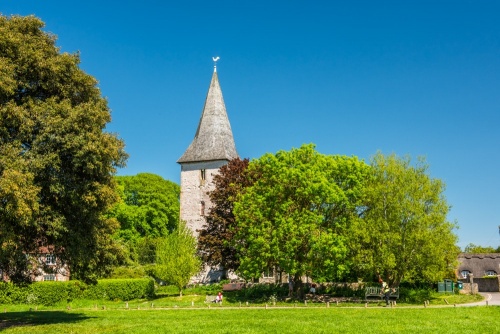
But history is never straightforward. An alternate tradition says that Harold was not carried to Waltham Abbey but to Bosham, where he was born and where his principal home stood. He is said to lie buried beneath the chancel arch of Holy Trinity Church - the very same arch that is clearly depicted on the Bayeux Tapestry.
It is, of course, entirely possible that Harold was simply buried where he fell on the battlefield.
- Harold, d. 1066
Tower of London, London
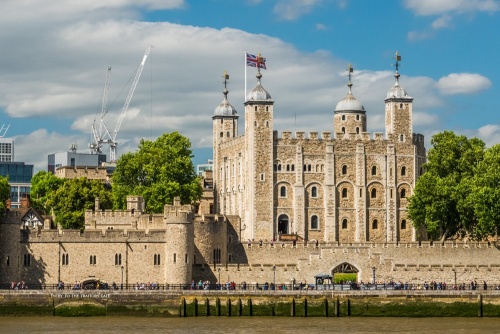
The Tower of London did not begin as a prison, but by the 16th century it had certainly gained that reputation. Among the highly-born prisoners to be incarcerated at the Tower was Lady Jane Grey, the tragic 'Nine Day's Queen'.
Lady Jane was a pawn in the schemes of her father-in-law, the Duke of Northumberland, who planned to put her on the throne in place of Mary Tudor when Mary's brother Edward VI died. The plan failed, Northumberland was executed, and Lady Jane followed.
She was buried in an unmarked grave under the high altar of the Chapel Royal of St. Peter ad Vincula at the Tower. In the 19th century the bones were unearthed and reburied in a common grave. The presumed location is marked by a simple plaque.
Another monarch who 'may' be buried at the Tower of London is Edward V, one of the tragic 'Princes in the Tower'. Edward and his younger brother Richard were traditionally said to have been murdered at the Tower by their uncle Richard III, though there is considerable doubt over the boys' fate.
Centuries after the princes disappeared from the Tower, bones of two boys were discovered buried in rubble at the base of a stairwell at the Tower. They were presumed to belong to the Princes and were reburied with ceremony in Westminster Abbey.
- Edward V, d. circa 1483 (possible)
- Lady Jane Grey, d. 1554
Westminster Abbey, London
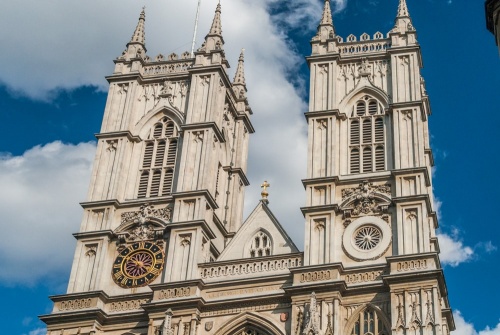
Edward the Confessor (reigned 1042-1066) was a devout man. He had a vision of an ecclesiastic-royal complex including a palace with a large monastery and an abbey church suitable for royal functions and burials.
To that end, he re-endowed the 7th-century monastery at Westminster, an area of marshy ground west of the City of London. Edward poured money into his grandiose scheme. He rebuilt the old Saxon church in fashionable Romanesque style and began building a new royal palace beside the monastery.
Edward's church was consecrated on December 28, 1065, but the saintly king lived only another eight days. He was buried in the church he created, and his richly carved tomb is considered the centre of Westminster Abbey today.
It was not for another 206 years that another monarch would be buried at Westminster, but the abbey is now the final resting place of 16 English monarchs, most of them in Edward the Confessor’s chapel and the Henry VII Chapel.
- Edward the Confessor, d.1066
- Henry III, d. 1272
- Edward I, d. 1307
- Edward III, d. 1337
- Richard II, d. 1400 (originally buried at Kings Langley, Hertfordshire)
- Henry V, d. 1422
- Edward V, d. circa 1483 (possible)
- Henry VII, d. 1509
- Edward VI, d. 1553
- Mary I, d. 1559
- Elizabeth I, d. 1603
- James VI/I, d. 1625
- Charles II, d. 1685
- Mary II, d. 1694
- William III and II, d. 1702
- Anne, d. 1714
In addition to the English monarchs above, Mary, Queen of Scots is also buried at Westminster Abbey, in a tomb slightly larger than that of her cousin Elizabeth I.
Windsor Castle, St George's Chapel, Berkshire
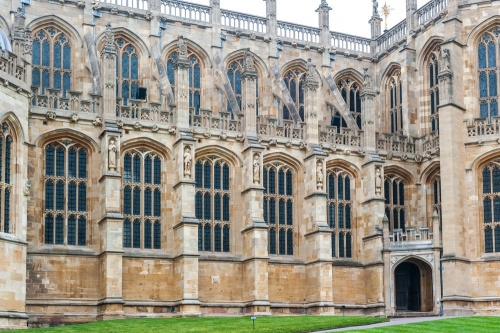
There are 12 monarchs buried at Windsor Castle; 10 in St George's Chapel and another two at the Frogmore Royal Mausoleum, in the grounds of Windsor Home Park.
St George's Chapel is the official home of the Order of the Garter and is among the most beautiful examples of Perpendicular Gothic architecture in England. It was begun in 1475 by Edward IV and finished 50 years later during the reign of Henry VIII.
Near the high altar is the tomb of Henry VI. After the pious Henry's murder in 1471 miracles were reported at his tomb and the chapel became a popular destination for visitors. By contrast, the memorial to Henry VIII and his favourite wife Jane Seymour is a very plain stone slab in the centre of the quire.
- Henry VI, d. 1471
- Edward IV, d. 1483
- Henry VIII, d. 1547
- Charles I, d. 1649
- George III, d. 1820
- George IV, d. 1830
- William IV, d. 1837
- Edward VII, d. 1910
- George V, d. 1936
- George VI, d. 1952
- Elizabeth II, d. 2022
Frogmore Royal Mausoleum (Windsor Castle)
This beautiful mausoleum in Windsor Home Park was built in 1862 by Queen Victoria following Prince Albert's death as a place where the royal couple would be laid to rest together. Victoria was buried here as were many of her children. The queen's mother Princess Victoria of Saxe-Coburg-Saalfeld lies in the neighbouring garden. The second monarch to be buried at Frogmore was Edward VIII (d. 1972).
In 1928 Frogmore House was proclaimed the official royal burial place so all subsequent monarchs will be buried here. The mausoleum is open to the public in August and on special charity open days throughout the year.
- Victoria, d. 1901
- Edward VIII, d. 1972
St Clement Danes, London
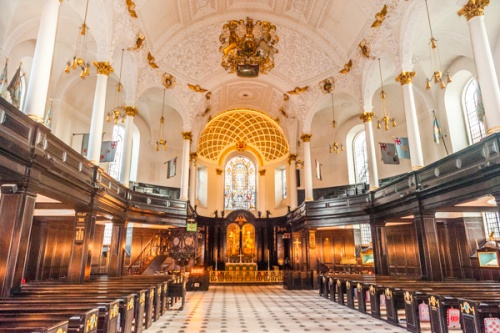
This beautiful 'Wren church' was built following the devastating Great Fire of London in 1666. It stands on the site of a far earlier 9th-century church erected by the Danes, hence the unusual dedication.
The exact origins of St Clement Danes is a subject of debate amongst historians but one version suggests that it was built to commemorate the Danish king Harold Harefoot, the son of Cnut, who was buried here.
Harold was initially buried at Westminster Abbey but when his brother Harthacnut took the throne he had Harold's body dug up, beheaded, and thrown into the River Thames. It was rescued by a fisherman and taken to London where it was reburied at a church in Westminster which was then given the name St Clement's Danes. There is no trace of the tomb today.
- Harold Harefoot, d. 1040
Old St Paul's Cathedral, London
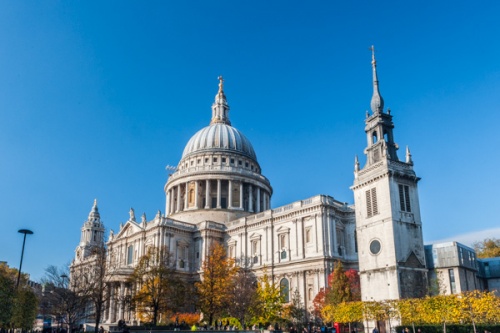
The original St Paul's was erected in 604 by King Ethelbert of Kent. This wooden church was destroyed by fire and its replacement was burned in a Viking attack. Another fire in 1087 led to the building of 'Old St Paul's Cathedral', a huge Gothic building that was not complete until 1240.
By the 17th century the medieval building was in a dreadful state of decay. Perhaps it was a blessing, then, that it burned to the ground in the Great Fire of 1666 and was replaced with Sir Christopher Wren's astonishing cathedral.
In the crypt of Wren's cathedral is a monument listing important tombs destroyed in the fire. Among them is the burial place of Aethelred the Unready, the unfortunate king whose name conjures up images of inept rule.
Aethelred actually translates as 'noble counsel', and the soubriquet 'Unready' comes from the Old English for 'un raed' or 'ill-counsel.
- Aethelred the Unready, d. 1016
Gloucester Cathedral, Gloucestershire
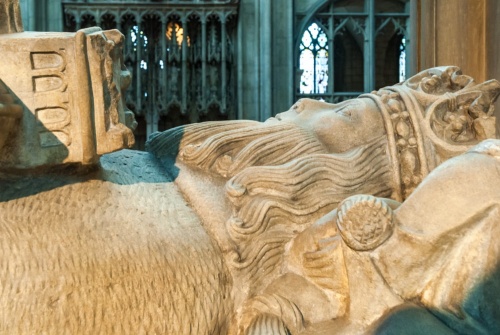
When Edward II was murdered at Berkeley Castle in 1327 three monasteries refused to accept his body for burial. His body found a resting place at the Benedictine Abbey of St Peter. Edward's son, Edward III, built an ornate alabaster tomb for his father.
When miracles were reported at the tomb it became a popular destination for pilgrims and the wealth they brought made the abbey one of the wealthiest in Britain. The abbey was suppressed at the Reformation but the monastic church was raised to cathedral status.
- Edward II, d. 1327
Worcester Cathedral, Worcestershire
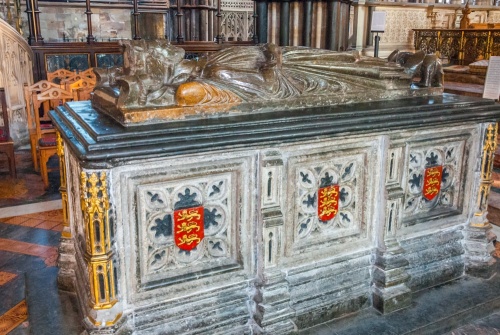
Around 680 a Benedictine monastery was founded on the banks of the River Severn at Worcester. After the Norman Conquest, Bishop Wulstan pulled down the earlier Saxon minster and built a new cathedral on the site.
When King John lay dying in 1216 he asked to be buried at Worcester Cathedral. He was buried under a tomb of Purbeck marble topped by his effigy. The church was rededicated in 1218 in the presence of King John's son and heir, Henry III.
- John, d. 1216
Leicester Cathedral, Leicestershire
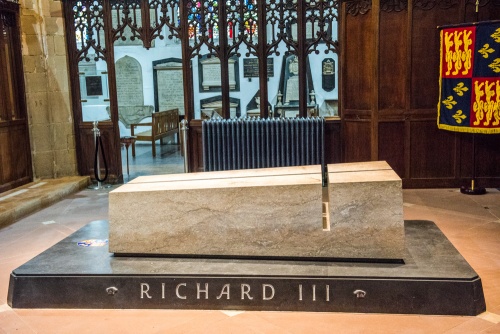
When Richard III lost his kingdom and his life at the Battle of Bosworth in 1485 his corpse was carried for burial to Greyfriars Priory. The Priory was destroyed during the Dissolution of the Monasteries under Henry VIII and Richard's grave was lost for centuries.
It was dramatically rediscovered under a council car park in 2012 and reburied in neighbouring Leicester Cathedral in 2015. Richard III's tomb can be found in the ambulatory between the high altar and the Chapel of Christ the King at the east end of the cathedral.
- Richard III, d. 1485
ABROAD
Herrenhausen (Welfenmausoleum), Germany
- George I, d. 1727
George was originally interred in the chapel of Leine Castle, Hanover. It is perhaps fitting that the first Hanoverian king, who never learned to speak English, is buried in his homeland rather than in Britain.
Roskilde Cathedral, Denmark- Sweyn Forkbeard, d. 1014
- James II and VII, d. 1701
The Old Pretender's grave was lost in the tumult of the French Revolution. The building is no longer a church.
Abbaye Royale de Fontevraud, France- Henry II, d. 1189
- Richard I, d. 1199 (heart was buried at Rouen)
The graves themselves no longer exist and were probably destroyed during the French Revolution. The royal effigies, however, still survive.
Monastery of Bec, France- Empress Matilda (Queen Maud), d. 1167
Matilda was buried at Rouen Cathedral in Normandy, but her remains were late transferred to Bec.
L'Abbaye-aux-Hommes, Caen, France- William I, The Conqueror, d.1087
It says a lot that England's first Norman monarch was transported back to his homeland for burial. The early Norman kings were not English, they were not really French. They were very much Norman, and England took second place in their hearts.
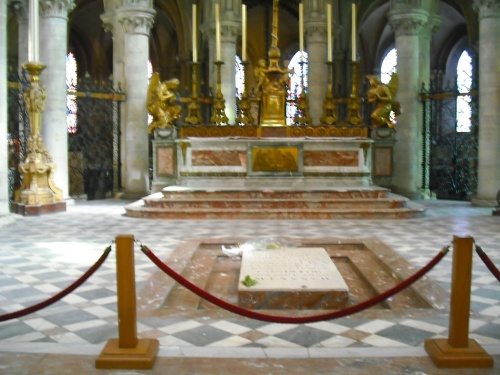
Burial places by Monarch/Date
- Cynegils, d. 643 - Winchester Cathedral
- Cenwalh, d. 672 - Winchester Cathedral
- Egbert, d. 839 - Winchester Cathedral
- Aethelwulf, d. 855 - Winchester Cathedral
- Aethelbald, d. 860 - Sherborne Abbey
- Aethelbert, d. 866 - Sherborne Abbey
- Aethelred I, d. 871 - Wimborne Minster
- Alfred the Great, d. 899 - Hyde Abbey
- Edward the Elder, d. 924 - Hyde Abbey, Winchester
- Athelstan, d. 939 - Malmesbury Abbey
- Edmund I, d. 946 - Glastonbury Abbey
- Eadred, d. 955 - Winchester Cathedral
- Eadwig (Edwy), d. 959 - Winchester Cathedral
- Edgar, d. 975 - Glastonbury Abbey
- Edward the Martyr, d. 978 - Shaftesbury Abbey
- Aethelred the Unready, d. 1016 - Old St Paul's Cathedral
- Edmund Ironside, d. 1016 - Glastonbury Abbey
- Sweyn Forkbeard, d. 1014 - Roskilde Cathedral, Denmark
- Cnut the Great, d. 1035 - Winchester Cathedral
- Harold Harefoot, d. 1040 - St Clement Danes, London
- Harthacnut, d. 1042 - Winchester Cathedral
- Edward the Confessor, d. 1066 - Westminster Abbey
- Harold Godwinson, d. 1066 - Waltham Abbey / Bosham
- William (I) the Conqueror, d. 1087 - Abbaye-aux-Hommes, Caen
- William II (Rufus), d. 1100 - Winchester Cathedral
- Henry I, d. 1135 - Reading Abbey
- King Stephen, d. 1154 - Faversham Abbey / St Mary of Charity Church
- Empress Matilda, d. 1167 - Rouen Cathedral
- Henry II, d. 1189 - Fontevraud Abbey
- Richard I, d. 1199 - Fontevraud Abbey
- John, d. 1216 - Worcester Cathedral
- Henry III, d. 1272 - Westminster Abbey
- Edward I, d. 1307 - Westminster Abbey
- Edward II, d. 1327 - Gloucester Cathedral
- Edward III, d. 1377 - Westminster Abbey
- Richard II, d. 1400 - Westminster Abbey
- Henry IV, d. 1413 - Canterbury Cathedral
- Henry V, d. 1422 - Westminster Abbey
- Henry VI, d. 1471 - Windsor Castle, St George's Chapel
- Edward IV, d. 1483 - Windsor Castle, St George's Chapel
- Edward V, d. circa 1483- Westminster Abbey?
- Richard III, d. 1485 - Leicester Cathedral
- Henry VII, d. 1509 - Westminster Abbey
- Henry VIII, d. 1547 - Windsor Castle, St George's Chapel
- Edward VI, d. 1553 - Westminster Abbey
- Lady Jane Grey, d. 1554 - Tower of London
- Mary I, d. 1558 - Westminster Abbey
- Elizabeth I, d. 1603 - Westminster Abbey
- James VI and I, d. 1625 - Westminster Abbey
- Charles I, d. 1649 - Windsor Castle, St George's Chapel
- Charles II, d. 1685 - Westminster Abbey
- James II and VII, d. 1701 - Chapel of St Edmund, Church of the English Benedictines, Paris
- Mary II, d. 1694 - Westminster Abbey
- William III and II, d. 1702 - Westminster Abbey
- Anne, d. 1714 - Westminster Abbey
- George I, d. 1727 - Chapel of Leine Castle in Hanover, Germany
- George II, d. 1760 - Westminster Abbey
- George III, d. 1820 - Windsor Castle, St George's Chapel
- George IV, d. 1830 - Windsor Castle, St George's Chapel
- William IV, d. 1837 - Windsor Castle, St George's Chapel
- Victoria, d. 1901 - Frogmore, Royal Mausoleum
- Edward VII, d. 1910 - Windsor Castle, St George's Chapel
- George V, d. 1936 - Windsor Castle, St George's Chapel
- Edward VIII, d. 1972 - Frogmore, Royal Mausoleum
- George VI, d. 1952 - Windsor Castle, St George's Chapel
- Elizabeth II, d. 2022 - Windsor Castle, St George's Chapel
And for the sake of completeness let's include Oliver and Richard Cromwell, who, though not monarchs in name, exercised rule on a royal scale during the Commonwealth.
- Oliver Cromwell, d. 1658 - buried in Westminster Abbey, exhumed and posthumously executed in 1660, then reburied in a pit at Tyburn, London.
- Richard Cromwell, d. 1712 - All Saints Church, Hursley, Hampshire
See also:
Timeline of English monarchs
Facts about English monarchs
MOST POPULAR POSTS
